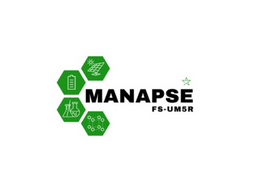The first batches of QDs prepared by the...
Continue →Partners
Project coordinator: Raphaël Schneider, Université de Lorraine, France
Main topic addressed: New, more efficient PV cells and components
Project partners:
- University of Liege (Belgium)
- Université de Lorraine (France)
- Mohammed V University in Rabat (Morocco)
- Mohammed VI Polytechnic University, UM6P (Morocco)
- University of the Witwatersrand (South Africa)
Aim of QDSOC
QDSOC aims to find new materials and better design PV cells to make solar panels more efficient and decrease their cost for generating clean and renewable electricity. The project will develop devices that will allow not only autonomous but also decarbonated production of electricity, thus ensuring energy independence for users.
Background
A photovoltaic (PV) cell is a device that converts sunlight, which is a clean and reliable form of renewable energy, into electricity. One of the main goals of the project is to achieve a power conversion efficiency value above 15%, which would constitute a ground-breaking performance for heavy metals-free PV cells.
The project also addresses the need to develop a reliable stand‐alone system architecture that can be easily and widely deployed in off‐grid African rural and remote areas, granting access to clean and affordable energy for remote communities.
The project fully meets EU objectives of finding new materials, better designing PV cells to make solar panels more efficient, and lowering the cost of generating clean and renewable electricity. It seeks to put Africa and Europe at the forefront of renewable energy technologies worldwide and enable market breakthrough for QDs-sensitized solar cells (QDSSCs).
About the project
Quantum dots (QDs) are nanocrystals exhibiting a tunable bandgap as a result of size and/or composition variation, and have been demonstrated to be of high interest in PV applications. Moreover, QDSSCs present promising cost-effective alternatives to conventional silicon semiconductor due to their outstanding properties, such as simplicity in fabrication, possibility to absorb light in wide solar spectrum regions, and theoretical conversion efficiency up to 44%.
QDSOC aims to develop new QDSSCs using heavy metal-free QDs as absorbing material in the visible and infrared regions for optimal use of the solar spectrum. Full solid-state devices will be engineered and assembled in Belgium and Morocco. Their photoconversion behavior and (opto)electronic properties will be deeply investigated to better understand the relations between the microstructural, light absorption and charge transfer properties of the materials developed. New synthetic routes will be developed by South African and French partners, and prototypes of larger scale devices will also be investigated by the Moroccan partner as a proof of concept.
The project also enables a strong collaboration between the partners and contribute to the training of young scientists (recruited Ph.D. students and researchers), who will become leaders in this research field shortly thus promoting capacity building.
Expected Results
QDSOC develops new QDSSCs using heavy metal free QDs as absorbing material in the visible and infrared regions for optimal use of the solar spectrum. It optimizes the interface between Ag-In-Zn-Se or CsSnX3-xYx QDs and the TiO2 photoelectrode using wet and vacuum deposition processes. Specific expected results include:
- Developing new syntheses of Ag-In-Zn-Se and CsSnX3-xYx QDs with optimal electronic and optical properties for use in QDSSCs
- Optimizing the structure and the electronic properties of the dense TiO2 layer via magnetron sputtering and of the porous TiO2 layer by wet based templating strategies
- Controling the microstructure of the TiO2 porous network, in order to form continuous and highly condensed interpenetrating
nanochannels allowing to maximize QDs to TiO2 charge injection and minimize recombination - Establishing the excited state and charge transfer properties of Ag-In-Zn-Se and CsSnX3-xYx as well as their interaction with TiO2 to further boost the QDSSCs efficiency














